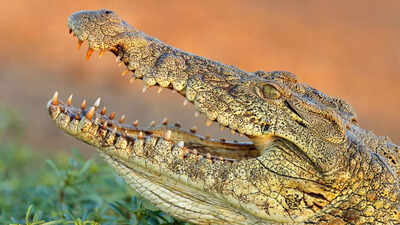ARTICLE AD BOX

Crocodilians are some of the most ancient and threatening predators on Earth. These sluggish reptiles are often seen basking in the sun, but they also have another side to themselves as powerful ambush hunters capable of terrifying speed and strength in the water.
While most species are shy and try to avoid humans, a few have a deadly reputation for their frequent and often fatal interactions with people.Crocodiles can be found in rivers, swamps, estuaries, and coastal waters across the globe. With a bite force that matches any animal on the planet and bodies adapted for precision, crocodilians don’t need much to become dangerous. In certain parts of the world, where human settlements are found near their natural habitats, encounters can turn tragic, and some species are more responsible for these incidents than others.
Here are 5 of the most dangerous crocodile species
Nile crocodile

The Nile crocodile is considered the most dangerous crocodile species in the world. Found across much of sub-Saharan Africa and Madagascar, these massive reptiles can reach lengths of nearly 20 feet and are responsible for an estimated 300 attacks on people each year, many of which are fatal. Their ambush tricks, territorial behaviour, and closeness to human settlements make them especially dangerous. Unlike some species that shy away from people, they openly end up encountering one.
Saltwater crocodile
Saltwater crocodiles, or “salties,” live across Southeast Asia, northern Australia, and nearby islands. These giants are the largest living reptiles, reaching over 20 feet and weighing up to 1,100 pounds. Though they prefer to remain hidden, when they attack, it’s quick and deadly. According to the International Union for Conservation of Nature (IUCN), between 2000 and 2007, there were nearly 30 recorded attacks in Australia and Malaysia alone, and many of them were fatal.
American crocodile
While not as aggressive as the Nile or saltwater crocodile, the American crocodile still poses a threat. Native to southern Florida, Central America, and northern South America, it prefers brackish or saltwater habitats. Males grow up to 16.5 feet. According to CrocBITE, between 2008 and 2013, 90 attacks occurred, resulting in about 20 deaths. Though they usually feed on smaller animals, they can become aggressive, especially when provoked or during territorial disputes.
Gharial

The gharial is mainly identified with its long, slender snout filled with sharp teeth, which may look menacing, but it’s actually not considered dangerous to humans. Found in the rivers of northern India and Nepal, this species feeds almost entirely on fish. According to Britannica, although it doesn’t attack people, it has been observed feeding on corpses released into rivers during funerals, which contributes to myths around its behavior.
At 12 to 15 feet long, it’s still an impressive sight—but not one humans need to fear.
American alligator

Found throughout the Gulf Coast and southeastern US, the American alligator is more likely to defend itself than attack unprovoked. Adult males grow to 13–15 feet, and while attacks are rarer, they do happen, especially when people try to interact with or feed them.



.png)
.png)
.png)
















 2 hours ago
5
2 hours ago
5








 English (US) ·
English (US) ·